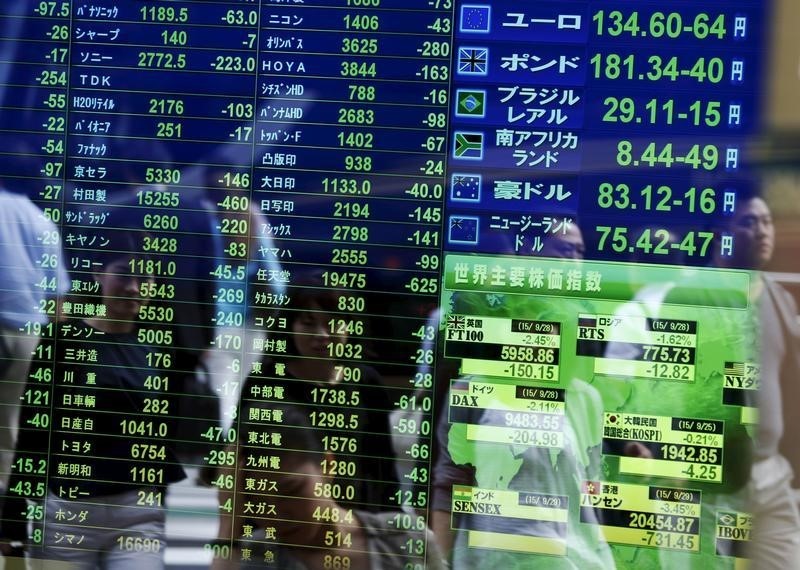By Ambar Warrick
Investing.com -- Most Asian currencies sank on Thursday as growing fears of a more hawkish Federal Reserve spurred an overnight spike in Treasury yields, while a swathe of weak regional economic data also dented sentiment.
More signs of stubborn inflation in the world’s largest economies drove up concerns that interest rates will remain higher for longer.
This largely offset optimism over a Chinese economic recovery, even as the world’s second-largest economy logged its strongest pace of business activity growth in over a decade.
China’s yuan was among the worst performers for the day, pulling back sharply from a 1% rally in the prior session. Both the yuan and its offshore counterpart lost about 0.4% to the dollar.
Focus this week is also on a meeting of high-level Chinese officials, which could result in broader government policy changes.
Other China-exposed currencies also retreated from recent gains, with the Taiwan dollar and South Korean won losing 0.3% and 0.5%, respectively.
Weak economic readings also painted a bleak picture for broader Asian markets, despite indicators of a strong recovery in China.
South Korean data showed that industrial production in the country slumped more than expected in January from the prior month. But production rose more than expected in January from the prior month, indicating that a bottom may be in sight.
The Japanese yen fell 0.2%, as data showed capital spending in the country remained firm even as business profits slipped in the fourth quarter. But while the reading may indicate some strength in the fourth quarter GDP, it also portends elevated inflation in the near-term.
Among Southeast Asian currencies, the Thai baht slid 0.5% after data showed that the country’s exports slumped far more than expected in January. Thailand’s trade deficit also widened more than expected during the month.
Broader Asian currencies retreated as U.S. manufacturing prices data unexpectedly grew in February, raising concerns that inflation was back on an uptrend in the month. U.S. Treasury yields surged after the reading, with short-term yields scaling 16-year highs on bets that U.S. interest rates will remain higher for longer.
The dollar steadied on Thursday after logging sharp overnight losses against a basket of currencies. The dollar index and dollar index futures rose about 0.1% each, and were still close to near two-month highs.
Rising U.S. interest rates bode poorly for Asian currencies, as the gap between risky and low-risk debt narrows.
